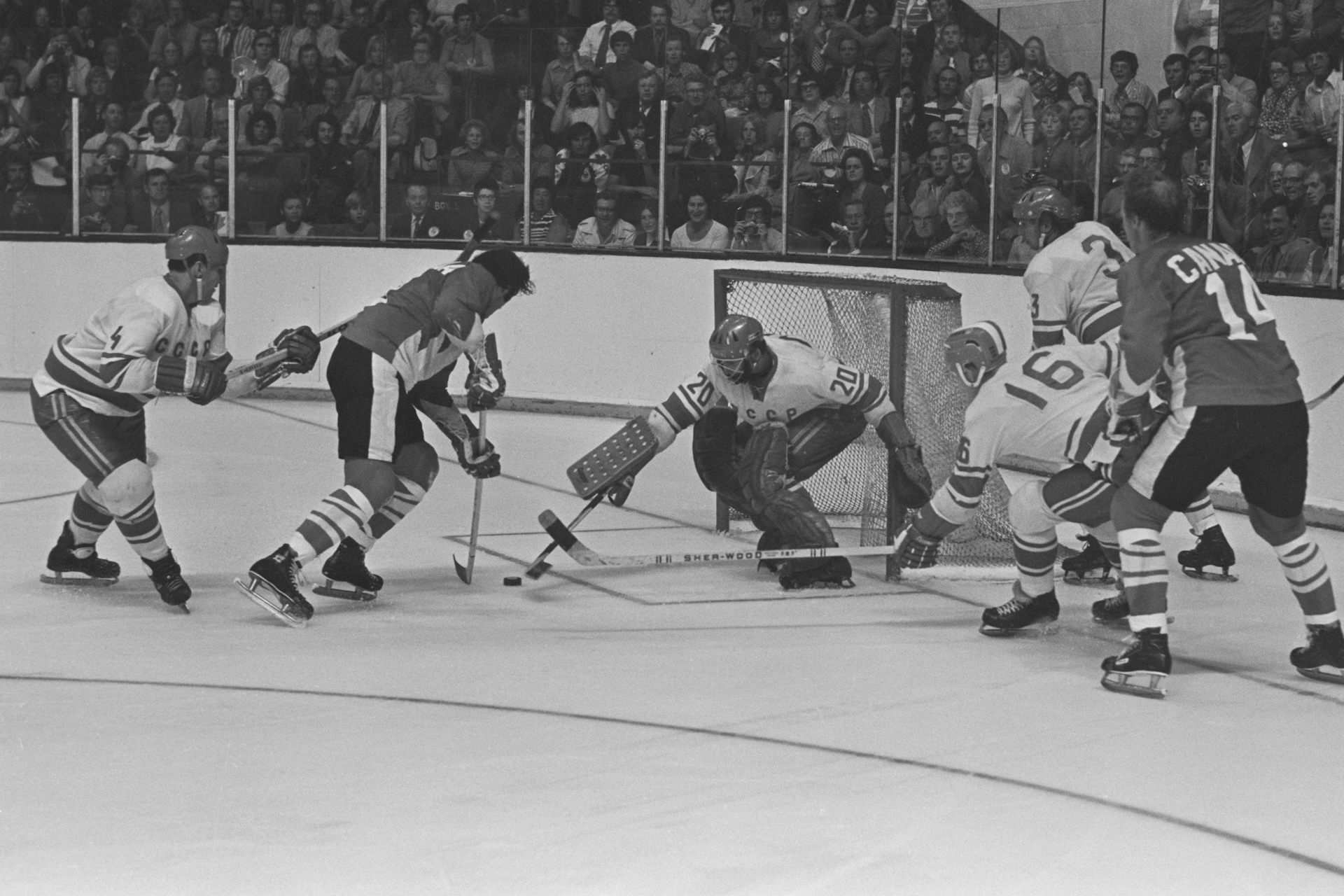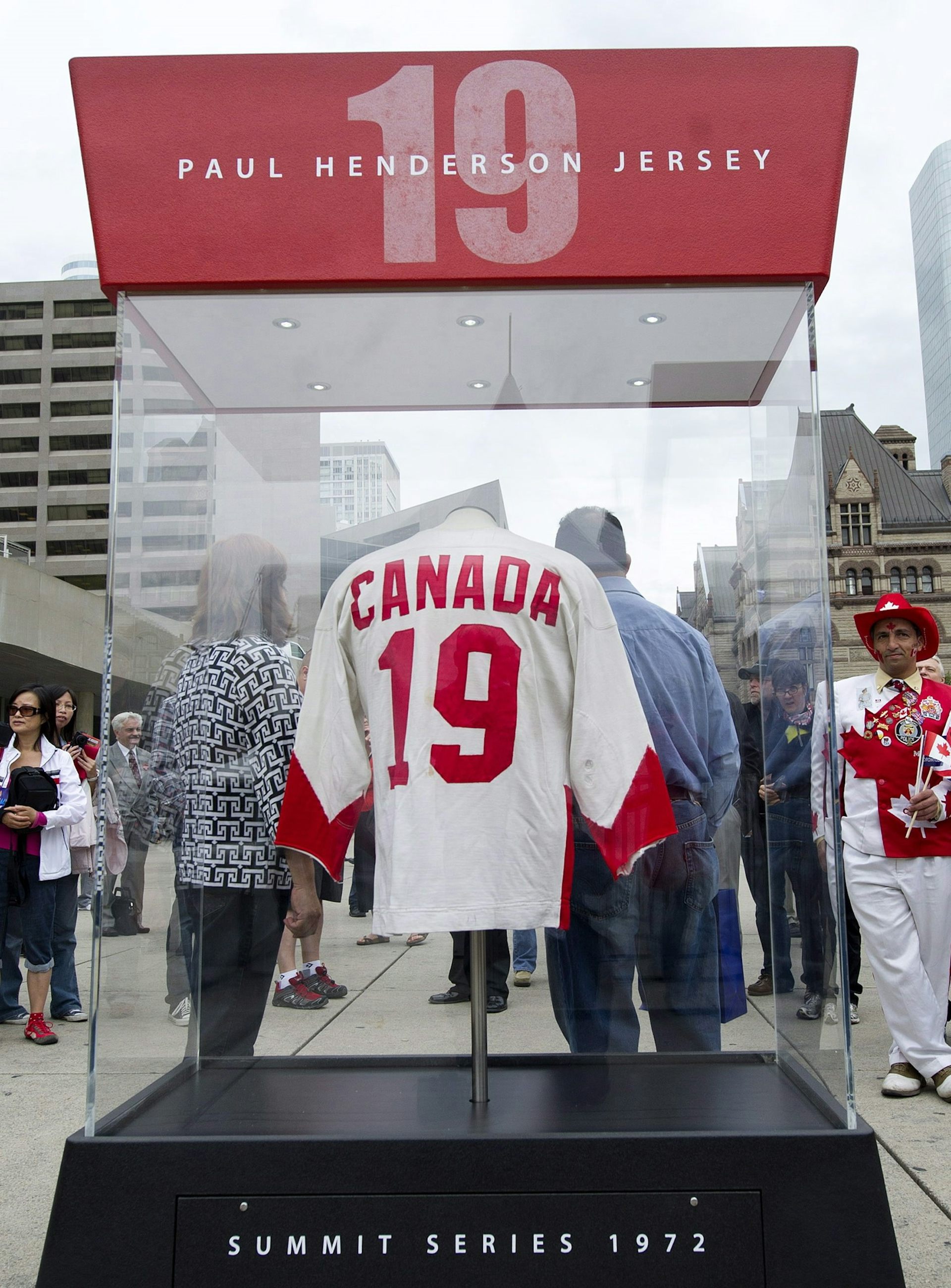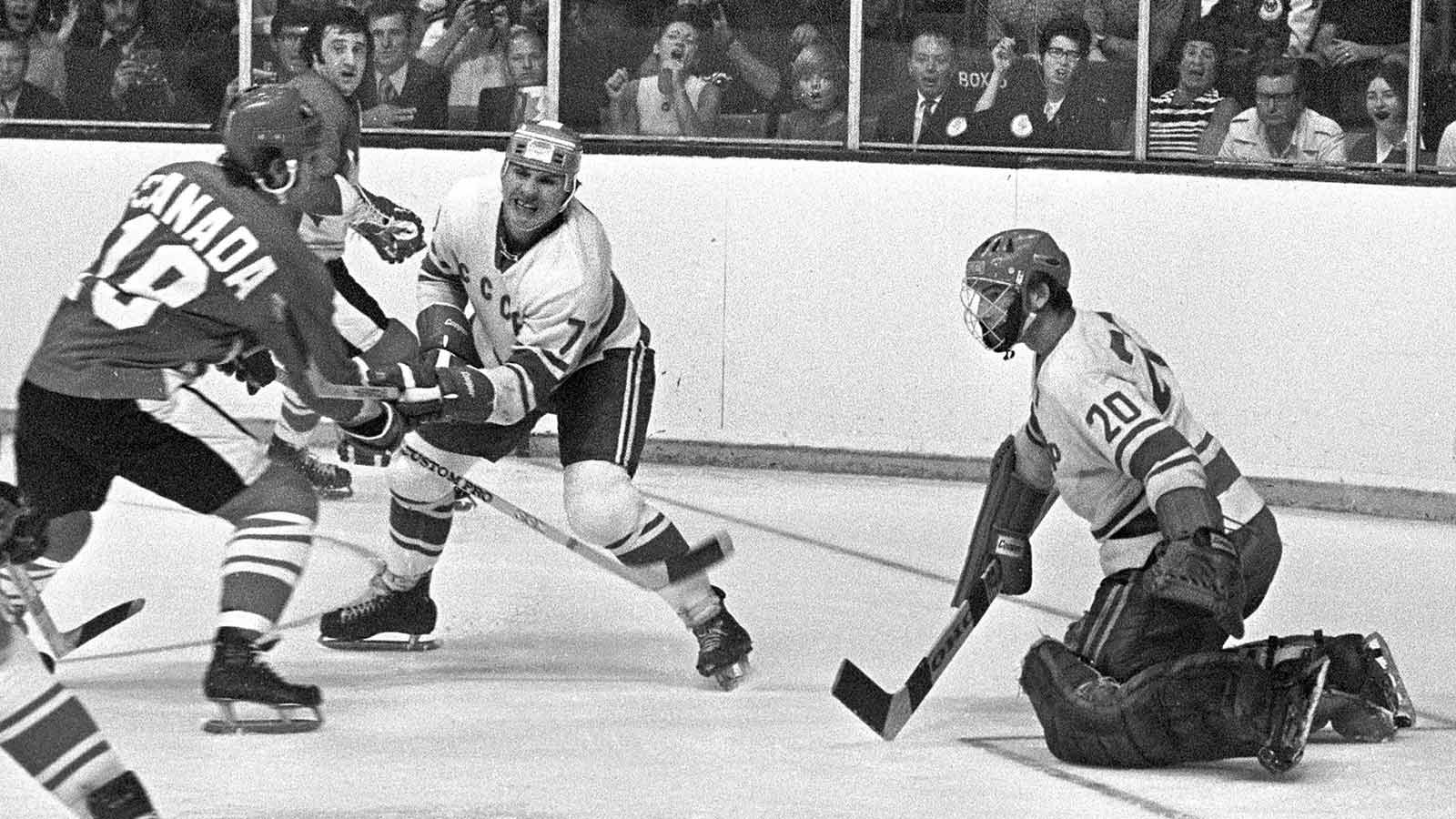This year marks the 50th anniversary of the 1972 Summit Series. This hockey series, played between Canada and the former Soviet Union, has become the subject of Canadian cultural myth-making since Paul Henderson’s winning goal for Canada during the final game.
The 1972 Summit Series — also known as the Canada-U.S.S.R. Series — was an eight-game hockey series played half in Canada and half in the Soviet Union. Despite falling down three games to one, Canada won the final three games in Moscow to win the series four games to three. (One game ended in a tie.)
The series ended in a dramatic win that saw Canada overcome a two goal deficit to win the game with a last-minute goal by Paul Henderson — a moment many Canadians at the time experienced live on television and radio.
More than almost any other international sporting contest, the Summit Series continues to occupy a heightened role in the Canadian cultural consciousness, despite the 50 years that have come and gone since then.
A lasting legacy
In their book about hockey in all its forms, former National Hockey League goaltender Ken Dryden and journalist Roy MacGregor identified the Summit Series as a uniquely “Canadian memory” and marked 1972 as a “coming of age” for Canada as a nation.
As Dryden and MacGregor further explained, when it comes to the Summit Series, “the specifics of memory do not deliver the resonance of the feeling that lingers.” This “feeling that lingers” helps describe the magnetic hold these hockey games have had over our collective memory for half a century.
Now, over thirty years since Dryden and MacGregor wrote that description, the Summit Series has continued to pervade broader sporting and cultural discourse in Canada. Although younger generations now experience the series as a cultural inheritance, efforts to memorialize it continue to appear in many forms.
The making of a myth
For many, the Summit Series entered the realm of national mythology instantly, causing its key moments and figures to become larger than life, while other details and hard truths were lost to time.
The recurrence of the Summit Series and its associated figures throughout Canadian sport history can be viewed as a form of collective cultural haunting. Conscious efforts to reanimate the series and its cast of characters for future generations has created an uncanny afterlife for the event.
The Summit Series is not unique in this way; memorializing the past and commemorating key historical events is a shared passion for many individuals, public historians and others.
But while it might feel stereotypical to suggest that a hockey tournament is essential to Canada’s self-conception, the Summit Series is undoubtedly a watershed moment in Canadian cultural history.
What distinguishes the Summit Series are several key features: the tournament’s oversized cultural influence, the reliance on first-person memory, the Series’ perceived cultural and historical significance, its influence on internal and external conceptions of Canadian identity, efforts to proliferate the tournament’s legacy for future generations and, naturally, the series as a show of Canadian hockey excellence.
Taken together, it should come as no surprise that this nation is still haunted by the Summit Series, but what is perhaps unusual is how willing we are to be plagued by this sporting spectre.
(Mis)remembering the Summit Series
In Canada, the Summit Series has been remembered, and misremembered, so many times over that the lived realities of the tournament have been augmented and altered beyond recognition.
When recalling the Series today, the “real” versions of Bobby Clarke, Harry Sinden, Vsevolod Bobrov, Josef Kompalla or any other figure are quickly overshadowed by their ghostly doubles.
In his book on intercultural exchange, theatre and English professor Joseph Roach employs the term “surrogation” to describe this impulse to fill holes left in our cultural memories with our individual and collective recollections.
Surrogation, suggests Roach, occurs when “survivors attempt to fit satisfactory alternates” into “the cavities created by loss through death or other forms of departure.” Unfortunately, the fit can never be exact, since “the intended substitute either cannot fulfil expectations, creating a deficit, or actually exceeds them, creating a surplus.” Such is the case with the Summit Series, where the documentary record has been altered beyond recognition through hearsay and the trick of time and memory. The result is a literal shadow roster of key players and moments that recur and repeat across time: the Summit Series and its ghostly double.
Haunted by the past
Like a ghost, the Summit Series continues to haunt Canada in 2022. It haunts our actions and behaviours, including our international reputation. It hides behind how hockey is played and who gets to participate.
It always lurks around the corner, informing both our perceived hockey supremacy and our conceptions and performance of masculinity. This ghostly vision of the Summit Series even haunts our eternal discussions of what it means to be Canadian.
Since 1972, these notions have been codified through nostalgic returns to the Summit Series, not as it was, but how each of us remember it. This has resulted in the creation of many distinct Summit Series, each unique to the individual who has returned to their memories through repeated recollections.
However, the presence of this sporting ghost indicates a mistake that has been allowed to fester: a history that is misunderstood or, even intentionally, misremembered. In the case of Canada and the 1972 Summit Series, it is up to each of us to determine if we will simply give up and live with them or work to exorcise these ghosts through a new vision of hockey’s Canadian future.
Written by Taylor McKee, Assistant Professor, Sport Management, Brock University
This article is republished from The Conversation under a Creative Commons license. Read the original article.

Paul Henderson, centre, speaks with his Summit Series teammates as Canada’s Summit Team is inducted into Canada’s Walk of Fame in Toronto in September 2012. (THE CANADIAN PRESS/Nathan Denette)

Team Canada’s Phil Esposito moves in to score on Vladislav Tretiak of the Soviet Union team in Toronto ensuring the second game of the 1972 Summit Series. Behind Esposito is Viktor Kuzkin, playing for the U.S.S.R. (THE CANADIAN PRESS/Peter Bregg)

Paul Henderson’s game-winning Summit Series jersey is displayed in Toronto. (THE CANADIAN PRESS/Nathan Denette)
![]()
5 Ways to Support HipHopCanada:



















































